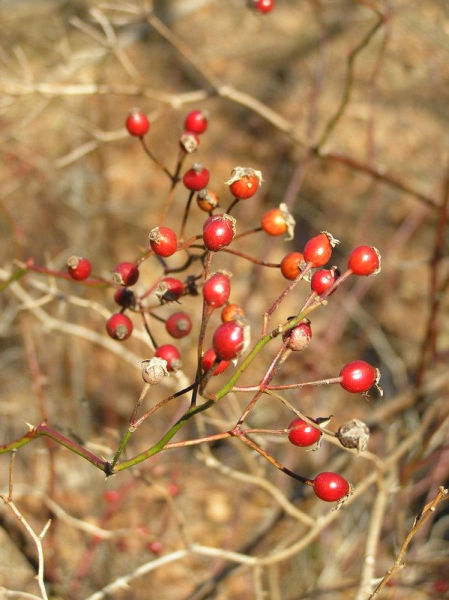
This is a real weed.
Ask anyone who studies native plants and they’ll tell you Multiflora rose (Rosa multiflora) is a scourge.
Brought here in the 1800’s as a potentially healthy graft for ornamental roses (which didn’t work, by the way) and then promoted as a “living fence” and erosion control, multiflora rose is now federally listed as an invasive species.
It spreads easily, thrives in disturbed soil, and quickly outcompetes native species. And it’s hard to get rid of! It grows into a dense shrub up to 15 feet tall that’s covered in very prickly thorns.
The good news is that multiflora rose provides food and cover for wildlife. Shown here are its fruits, called rose hips, which birds eat in winter.
Rose hips are small but packed with vitamin C. You can make them into tea but you need up to 1.5 cups of ground rose hips for every one cup of water. It’s a painful, prickly harvest that takes the fun out of what becomes a sour cup of hot water.
I’ve often wondered why they’re called “hips” so I looked it up. Hip (pelvis) and hip (fruit) come from different words that now sound alike. Hip (pelvis) comes from the word hop (jump). Hip (fruit) comes from the Dutch word “joop” which means fruit.
Look for multiflora rose in winter and you’ll find it almost everywhere. Look closely inside the bush and you’ll probably find a bird or two.
(photo by Dianne Machesney)
the cardinals in my yard are always investigating my volunteer multiflora for nesting potential. they did build a nest one year in the multiflora, but then abandoned it. i suspect it had something to do with a pair of pesky cowbirds. however, here is my favorite photo of a chosen cardinal home:
http://www.flickr.com/photos/mindrella/2449391684/
Whoa! That nest was well disguised! I thought “Why is she showing me a bicycle?” Hah!